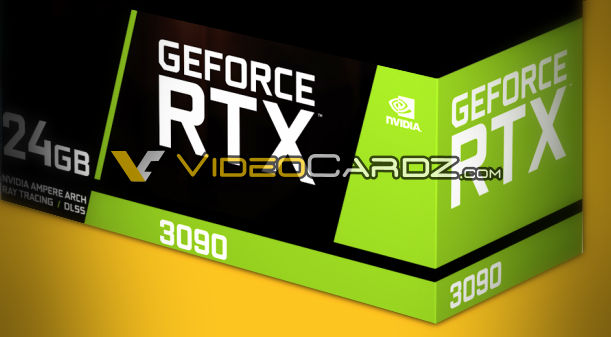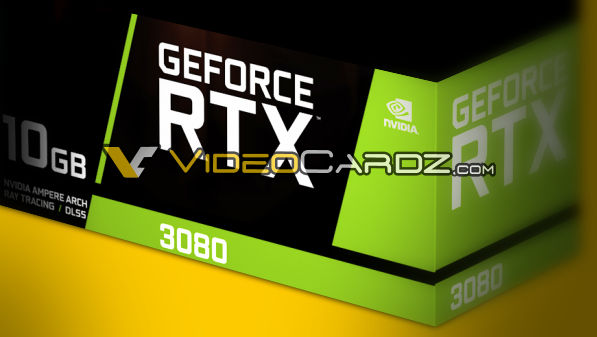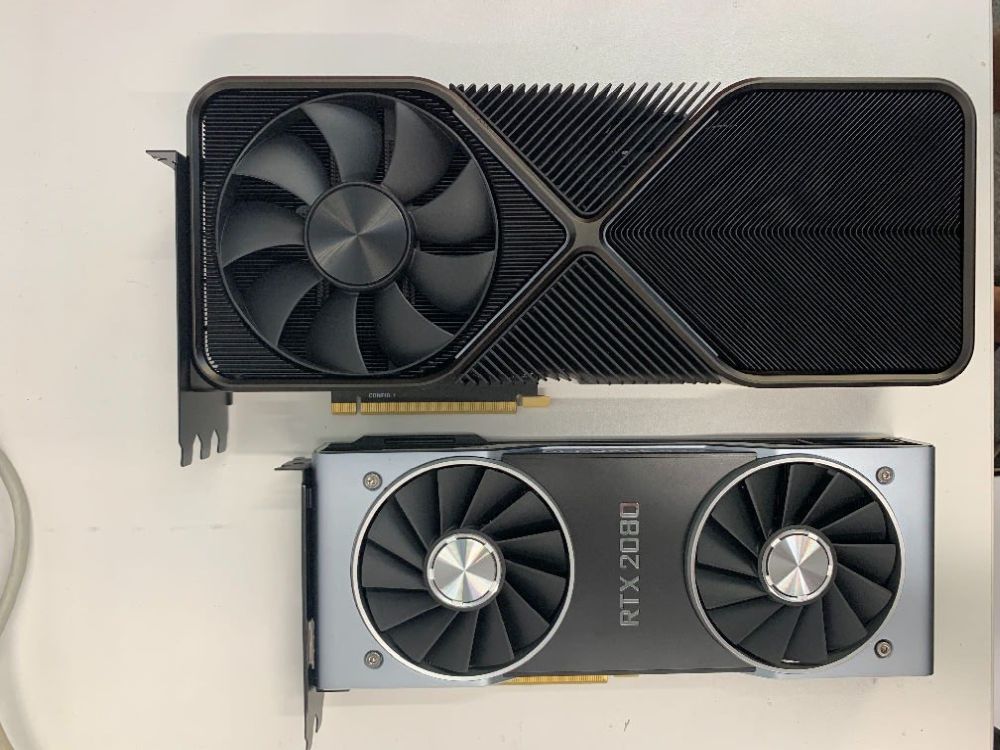We are now just four days from NVIDIA’s official announcement of its Ampere GPU architecture and subsequently, the launch of its GeForce RTX 30 series cards. While we wait, a new leak seems to confirm the specification of the cards launching on 1 September.
According to information obtained by the popular leakster site, Videocardz, NVIDIA will be announcing three cards on the day: the GeForce RTX 3090, RTX 3080, and RTX 3070. As per earlier reports, we know that the RTX 3090 will be the GPU maker’s top-tier card, featuring a GA102-300GPU, 24GB GDDR6X, and 51248 CUDA cores. Running across a 384-bit memory bus. The card will have a TDP of 350W.
What is surprising is that the same source says that the RTX 3080 that will launch concurrently will have 4352 CUDA cores and just 10GB GDDR6X memory, which is clearly and significantly less than half the GDDR6X memory that the RTX 3090 runs on. However, the same sources have said that NVIDIA’s board partners will be preparing a second variant of the RTX 3080; one with double the amount of GDDR6 graphics memory.

Additional details for the RTX 3080 also point to the card running on a 320-bit bandwidth and a TDP of 320W. Also, custom models of the card will require dual 8-pin PCIe connectors in order to function.
At the bottom of the list is the RTX 3070. The card has reportedly been confirmed to ship out with 8GB GDDR6 memory, and not the new GDDR6X graphics memory standard. It’s a card that is still mostly shrouded in mystery, but speculations put the card’s TDP at 220W and its memory speed at 16Gbps. Interestingly enough, there are rumours that place the card’s performance on the same level as the current RTX 2080 Ti, but take this with a pinch of salt.

Beyond that, Videocardz said its sources also confirmed that NVIDIA’s next-generation Ampere GPU will introduce its 2nd generation ray-tracing cores and its 3rd generation Tensor cores. Further, the cards will also finally support the PCIe 4.0 interface, as well as HDMI 2.1 and DisplayPort 1.4a. Lastly, the data that was seen suggests that the Ampere will be based on the 7nm process node, although this bit of information still remains unconfirmed.
(Source: Videocardz)
Follow us on Instagram, Facebook, Twitter or Telegram for more updates and breaking news.



